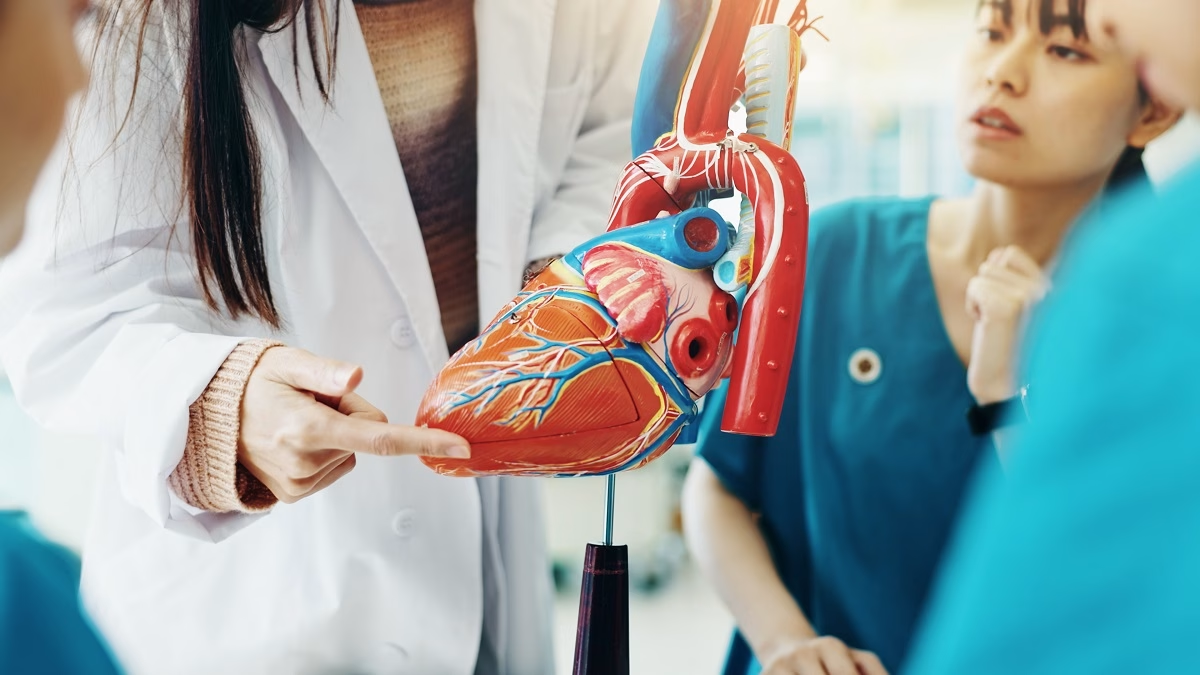An irregular heart rhythm that causes the lower heart chambers (ventricles) to move randomly and fast is called ventricular fibrillation (V-fib). This is a life-threatening condition because it affects the ability of the lower chambers of the heart to pump blood, and without immediate treatment can be fatal.
Furthermore, V-fib is the deadliest form of arrhythmia. In most cases, people with this disorder have several seconds before they pass out (also known as cardiac arrest). If you notice that a loved one experiences symptoms of V-fib, immediately call 911 or go to the nearest emergency room.
Symptoms
Usually, people with this condition experience the following symptoms before passing out. Examples include:
- Angina (chest pain)
- Dizziness
- Lightheadedness
- Nausea
- Fast heart rate
- Palpitations
- Shortness of breath
In some cases, people with this condition collapse without warning signs and often do not respond when you try to wake them.
Causes
There are multiple causes of V-fib. These include:
- Heart attack (myocardial infarction)
- Ischemia
- Cardiomyopathy (changes in the structures of the heart)
- Other types of arrhythmia
- Congenital heart defects (such as Brugada syndrome)
- Heart surgery
- Some medicines
- Illegal drugs (including methamphetamine, cocaine, and others)
- Electrolyte imbalances (such as reduced levels of Potassium or Magnesium in the blood)
- Electrical shock
- Commotion cordis
Risk Factors
Physicians have identified some factors that could elevate your risk of developing ventricular fibrillation. Check below some examples:
- Coronary artery disease
- Hypoxemia (reduced oxygen levels in the blood)
- Acidosis (increased acid levels in the body)
- Other heart conditions
- Genetic predisposition
- Sepsis
- Lifestyle factors (including smoking, lack of physical exercise, and others)
What Are The Potential Complications of Ventricular Fibrillation?
In rare cases, people with V-fib recover completely, but most of them develop serious complications. Examples include:
- Permanent brain damage
- Kidney or liver failure
- Damage to the heart muscle
- Coma
- Sudden cardiac arrest and death
- Neurological problems
- An increased risk of recurrent V-fib
This document does not contain a full list of V-fib complications. You can also consult with your physician about ways to reduce the risk of previous complications.
How to Prevent Ventricular Fibrillation?
Usually, people develop this condition due to another type of ventricular arrhythmia. If you notice symptoms of irregular heart rhythm, early diagnosis and regular checkups are recommended. When the condition is found early, it may help prevent life-threatening complications. It is important to perform genetic tests if you have a family history of the disease because it significantly increases the risk of developing dangerous heart rhythms. In general, the main cause of ventricular fibrillation is myocardial infarction. Check below some tips that may help prevent heart attacks:
- Adopt a heart-healthy diet (including fresh fruits, vegetables, and whole grains)
- Regularly perform physical exercise
- Manage chronic health conditions (such as high blood pressure, diabetes, high cholesterol, and others)
- Reduce stress
- Try to get and keep a healthy weight
Diagnosis
This health condition can be confirmed during an electrocardiogram (EKG or ECG). Sometimes, ventricular fibrillation can be diagnosed during cardiac arrest if you have a cardiac monitor or an implanted cardiac device. Physicians may perform additional tests to determine the exact cause of V-fib. For example, blood tests, echocardiogram, cardiac MRI (magnetic resonance imaging), coronary angiogram, or cardiac catheterization.
Treatment
Usually, people with this condition need immediate treatment. So, you should call your local emergency number and take the following actions. It may help save the life of someone with sudden cardiac arrest. For example:
- CPR – This procedure involves chest compressions, especially until someone finds an automated external defibrillator (AED) or medical help arrives.
- AED – This is a specific device that delivers electrical impulses to restore normal heart rhythm. Generally, the survival rate with AED is approximately 95%.
Those who survive are at increased risk of recurrent cardiac arrest. That’s why you should see a doctor for treatment. Some people may need the following options. For example:
- Antiarrhythmic medicines (this group of medicines is used to keep a healthy heart rhythm)
- Implanted device – Almost everyone who survives ventricular fibrillation needs an implantable cardioverter defibrillator (ICD). It is used to identify arrhythmia and restore a normal heartbeat.
- Ablation or cardiac sympathetic denervation – These procedures are rarely prescribed by doctors. Commonly, they are used to destroy signal pathways.
Frequently Asked Questions
What can I expect if I have ventricular fibrillation?
The prognosis of this condition depends on how fast you get help and treatment. With immediate treatment, approximately 50% of people survive. If you do not get treatment, the survival rate decreases by 7% to 10% per minute. Furthermore, defibrillation usually works on 30% of people with heart failure. Unfortunately, this condition can be fatal even with successful defibrillation.
What is the difference between ventricular tachycardia and ventricular fibrillation?
While both conditions are life-threatening, there are some differences between them. Ventricular tachycardia occurs when the lower heart’s chambers (ventricles) are beating too fast. In those who develop ventricular fibrillation, an irregular heart rhythm occurs.
Can stress cause ventricular fibrillation?
Yes, excessive stress may negatively affect both the frequency of arrhythmias and the damage caused by ventricular fibrillation. Ask your healthcare professional if you have any other questions.




